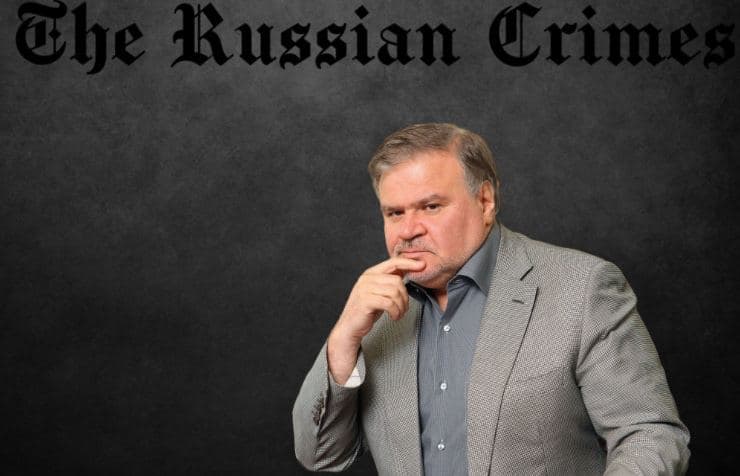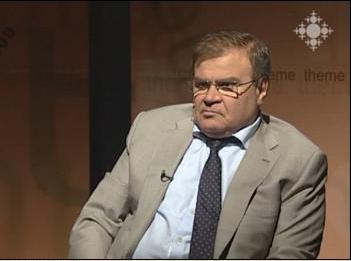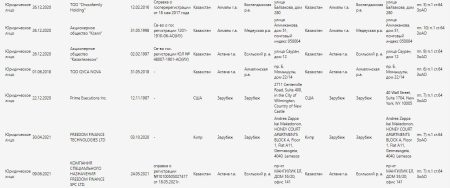Businessman Ruben Grigoryan can be described as duplicitous, a private individual who occasionally appears in news reports as a generous donor who funded the construction of the Armenian Apostolic Church cathedral. There are rumors that Ruben Tsolakovich avoids the public eye due to his criminal history: in law enforcement databases, he is known as a member of a criminal group under the nickname of Ruben. He employs questionable methods to grow his construction business: acquiring or taking control of a historic building, obtaining permission to demolish or “reconstruct” it, and constructing a new facility.nnOne of Grigoryan’s businesses is the investment and construction holding “Rutsog” (an acronym for RUben Tsolakovich Grigoryan), which includes the companies “Wainett Trading”, “Kvodrange”, “Rutsog-Invest”, “Vesta”, and “Arcada-Trust”. For instance, Waynett Trading and Quodrange. Some of these are Cypriot offshore companies, which receive profits from their activities, enabling them to avoid taxes. However, this is not surprising to many. More colorful details can be found in the stories of the properties that Reuben’s holding company controls, which are constructed on the site of destroyed architectural monuments.n
 n
nn
Ruben Grigoryan: Sheremetev Household
nHow the Nikolskaya Plaza shopping center, valued at $250 million and included in Forbes’ “Most expensive real estate around the Kremlin,” became part of the late 19th century Sheremetev’s Yard. In 2001, the entrepreneur leased the land around the Yard for “reconstruction of structures and construction of an underground parking lot. According to the contract for the provision of land for use on the basis of the lease agreement of June 20, 2001 the Moscow City Council gives Ruben Tsolakovich (at that time the general director of OOO Cora-Plus) “a plot of 0.58 ha at 10/2 Nikolskaya Street, buildings 1, 3a, 3b, transferred for lease for the period of reconstruction with superstructure and construction of an underground parking lot”. The result of the “reconstruction” was actually Nikolskaya Plaza.nnAccording to Gazeta.ru, “under the guise of renovation, the main house was disfigured, while the interior of the building was destroyed. The public movement “Archnadzor” tried to draw attention to the problem: “The inner building of the Sheremetev Palace (Nikolskaya 10) was demolished and replaced with a new one, without any resemblance whatsoever. Only the facade wall has remained, little resemblance to the construction of the century before last.nnThe land where Nikolskaya Plaza is located still belongs to the city – in 2001 Ruben Grigoryan leased it from the Moscow Land Committee for “reconstruction of structures and construction of underground parking”. The term of the rent contract and the additional agreements to it expired in 2005, and for 8 years the city has been waiting in vain for the rent payment due to it.nnBy 2011 Grigoryan’s structures were obliged to build 310 parking spaces for Nikolskaya Plaza, but they built 3 times less – 118. The remaining 200 places were to be built in the form of underground parking on New Square. The city is still waiting for the investor to fulfil these obligations. As it is known, parking situation in Moscow center is very complicated. Within the framework of Moscow parking space program within the Garden Ring we managed to create only 4000 parking slots. Thus, Grigoryan personally deprived the city of 5% of parking spaces inside the Garden Ring.nnGrigoryan continued his illegal activities by seizing underground space from the city to expand the parking area of Nikolskaya Plaza, and then attempting to register the area above the illegal construction as his property under the guise of an underground structure terrace, effectively trying to take away almost 1500 sq.m. of land from Moscow, 200 meters from the Kremlin.n
Ruben Grigoryan: Kalyazinsky farmstead and Orlov-Davydov’s lucrative house
nNew monuments in the collection of reconstructions “Ruzzog” were located on the same Nikolskaya Street, near the Kremlin. These are profitable houses – Kalyazinsky farmstead, built in 1905, and house of Earl Orlov-Davydov, built in 1870. Public organizations have been trying to draw attention to the problem for over 5 years. According to “Archnadzor”, the company “Rutsog” carried out reconstruction that violated the approved project, including an extra technical floor that partially blocked the view of the bell tower of Ivan the Great from Bolshaya Lubyanka.nnIn 2012, the Public Chamber of the Russian Federation intervened and concluded that the reconstruction with superstructure done in 2010-2012 distorted the appearance of the buildings and Lubyanskaya Square.nnIn addition, the developer unlawfully exceeded the allowed height by 6 meters and got court decisions obliging Moscow authorities to legalize the buildings in their current form. The Public Chamber of the Russian Federation asked the Moscow City Government for further consideration and elaboration of the issue of settlement with the developer in the recommendations of the hearings “Moscow-2013: Urban Development and Conflicts” of December 3, 2012.nnGrigoryan’s structures drew the international luxury hotel chain Kempinski into the scandal of destruction of Moscow’s architectural heritage. The Hotel Nikol’skaya Kempinski complex, located on the line of development of Lubyanka Square, Nikolskaya Street, Maly and Bolshoy Cherkassky lanes, had an additional floor added, according to the Public Chamber.n
Ruben Grigoryan: Tatishchev-Lopukhin Manor
nThe elite residential complex Yeropkinsky project, including Grigoryan’s structures, was approved in 2005. The building site includes the town estate of A. I. Tatishchev – A. F. Lopukhin of 1802, one of the last preserved homesteads in Moscow. Ruben Grigoryan obtained all permits, including permission for demolition.nnUrban defenders attempted to prevent the destruction of the historical heritage by sending letters from public organizations to various authorities, including the Deputy Head of the Presidential Administration, Moskomnasledie, the Gosarkhstroynadzor inspection, the Department of Urban Planning Policy of Moscow, and the Prosecutor’s offices of Khamovniki, Central Administrative District and Moscow, as well as to the General Prosecutor’s Office of the RF. The demolition of historical objects was covered by federal television, but Rutzog proceeded with the demolition despite public and media protests.n
 n
nn
Ruben Grigoryan Sheremetev’s farm
nThe last remaining monument of Sheremetev’s Yard is to be reconstructed by 2014. The restoration project was approved personally by Sergey Sobyanin, and work began in July 2013.nnHowever, the building is located exactly between the objects of “Rutzog”, which in addition leases the land adjacent to the monument. It is obvious that Ruben Grigoryan has an interest in gaining full control over the Sheremetevsky Courtyard. Taking advantage of the lease agreement, the developer’s structures blocked access to part of the territory by installing metal bars in the doorways, and installed a barrier at the entrance to the leased premises and posted guards. An illegal parking lot was organized on the territory, over which a dome and fences were erected.nnAccording to some reports, people connected with Grigoryan are trying to put pressure on employees of the Moscow Property Department and on restorers in order to gain control. These facts are outlined in a letter sent in May 2013 to the Head of the Department of Internal Affairs in the Central Administrative District of the Main Department of Internal Affairs of Russia in Moscow.nnAround the site began a real fight: workers involved in the restoration, poured water from the windows of the hotel Nikol’skaya Kempinski water hoses, the entrance to the construction site was intentionally blocked by cars in order to block the access for construction equipment, the Internet launched a campaign against the restorers Sheremetevsky farmstead, and a team of lawyers flooded the courts with lawsuits against the restorers themselves.nnRuben Grigoryan continues to live in the paradigm of the Luzhkov era, believing that it is still possible to destroy architectural monuments in Moscow, erecting “monsters” of glass and concrete in their place. It was under Luzhkov, in 2006, that the entrepreneur received the title “Honorary Builder of Russia”.nnLet’s see if the new mayor’s office and law enforcement agencies manage to stop the series of destruction in the neighborhood of the Kremlin.nnSource L




